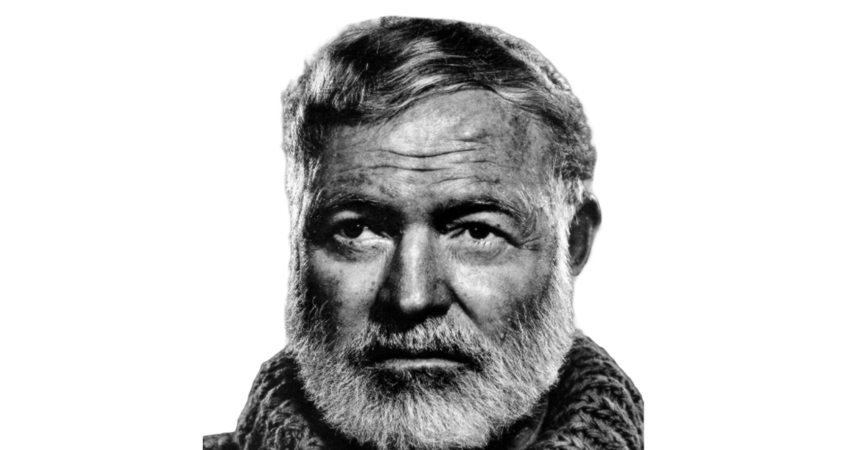Ernest Hemingway, one of the 20th century’s most iconic writers, led a life that was as compelling and colorful as the characters he created. His daily routine was a blend of disciplined writing, vigorous physical activity, and social interactions, all of which fueled his creative process and contributed to his legacy. Here’s a closer look at the daily routine of Ernest Hemingway, a man who mastered the art of living as vividly as he did the art of storytelling.
Morning: Writing and Solitude
6:00 AM: Rise and Shine
Hemingway was an early riser. He believed that the morning hours were the most productive for writing. He would wake up at the crack of dawn, around 6:00 AM, and start his day with a glass of water. The early morning quiet allowed him to focus and work without interruptions.
6:30 AM: Writing Session Begins
By 6:30 AM, Hemingway would settle at his writing desk. He preferred to write standing up, using a typewriter or writing by hand. He would often work in a small, sparsely furnished room to minimize distractions. His goal was to write a certain number of words each day, usually around 500 to 1,000. Hemingway was known for his meticulous and deliberate writing process, often revising his work multiple times to achieve the desired effect.
10:00 AM: Break and Breakfast
Around 10:00 AM, after several hours of intense writing, Hemingway would take a break for breakfast. His meal was simple, often consisting of fruit, eggs, and toast, accompanied by a strong cup of coffee. This break allowed him to recharge and reflect on his work.
10:30 AM: Outdoors and Exercise
After breakfast, Hemingway would spend time outdoors. He was an avid sportsman and believed in the importance of physical activity. Depending on his location, he might go fishing, hunting, or simply take a long walk. These activities provided him with inspiration and a sense of relaxation, which was crucial for his creative process.
Afternoon: Social and Recreational Activities
12:00 PM: Socializing and Lunch
By noon, Hemingway would often meet with friends or family for lunch. He enjoyed the company of others and used this time to engage in lively conversations. Lunch was usually a hearty meal, and Hemingway was known to enjoy a good drink, often a glass of wine or a cocktail.
1:30 PM: Reading and Research
Early afternoon was reserved for reading and research. Hemingway believed that reading widely was essential for a writer. He would immerse himself in books, newspapers, and magazines, gathering ideas and information for his writing. This period also included correspondence, as Hemingway kept in touch with friends, family, and professional contacts through letters.
3:00 PM: More Outdoor Activities
In the late afternoon, Hemingway often returned to his outdoor pursuits. He was particularly fond of fishing and would spend hours on the water. This time was both recreational and meditative, allowing him to decompress and gather his thoughts for the next day’s writing.
Evening: Reflection and Relaxation
6:00 PM: Dinner and Drinks
Evenings were a time for relaxation and enjoyment. Hemingway would have dinner, usually a robust meal that often included seafood or game, paired with wine. He appreciated good food and drink and believed in savoring the pleasures of life.
8:00 PM: Social Gatherings
After dinner, Hemingway often attended social gatherings or hosted guests at his home. He was known for his storytelling abilities and would regale his guests with tales of his adventures. These gatherings were lively and could last well into the night, filled with conversation, laughter, and camaraderie.
11:00 PM: Winding Down
By 11:00 PM, Hemingway would begin to wind down. He might spend some quiet time reading or reflecting on the day. This was a moment for solitude and introspection, which helped him prepare for the next day’s work.
12:00 AM : Sleep
Hemingway believed in the importance of a good night’s sleep and would usually retire by midnight. His days were physically and mentally demanding, and rest was essential to maintain his rigorous routine.
Hour by Hour Breakdown
- 6:00 AM: Wake up
- 6:30 AM: Start writing
- 10:00 AM: Break and breakfast
- 10:30 AM: Outdoor activities
- 12:00 PM: Lunch and socializing
- 1:30 PM: Reading and research
- 3:00 PM: More outdoor activities
- 6:00 PM: Dinner and drinks
- 8:00 PM: Social gatherings
- 11:00 PM: Winding down
- 12:00 AM: Sleep
Hemingway’s routine was a balance of discipline and indulgence, productivity and relaxation. It reflected his belief that a writer’s life should be rich with experiences and that creativity is nurtured by both solitude and social interaction. His approach to daily life contributed to his enduring legacy as one of the greatest writers of all time.







